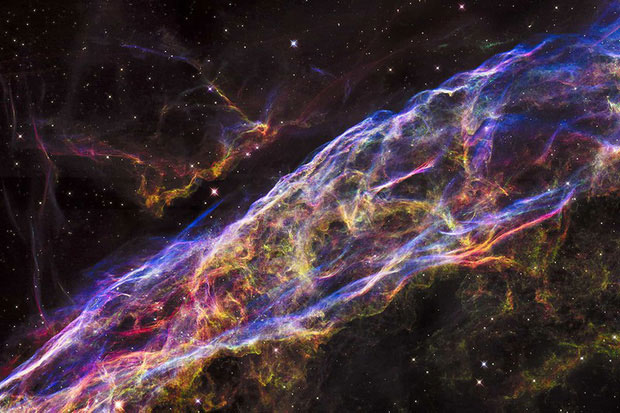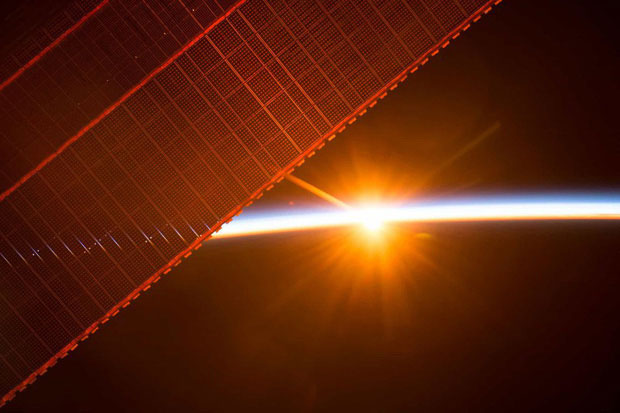The cosmic images of NASA make you completely overwhelmed
NASA's impressive image of galaxies, nebulae and countless other objects in the universe as a reminder of the smallness of the Earth compared to the outside world.

A massive star exploded 8,000 years ago: The remnants of this star in the Veil Nebula are spread over 110 light-years and 2,100 light-years from us.

The image of Orbital ATK's Cygnus spacecraft was recorded by Canadarm2 of the International Space Station (ISS) as it transferred 3,447 kg of supplies to ISS.

The Calabash Nebula is the result of a star changing from a red dwarf star to a planetary nebula, emitting dust and gas into space in an impressive display.

One of 16 times the sunrise that ISS witnessed in a day.

Spring on Mars: The sand dunes in Mars' northern hemisphere are covered with snow and dry ice until the spring sunshine comes, melting ice and snow to reveal the dark sand bands like the photo above.

A rare close-up image shows evidence of water on Mars: Dark narrow bands on the walls of the Garni crater on Mars are evidence that water can flow on the planet's surface. summer months.

Nili Fossae is one of the most colorful lands on Mars in the northwestern Isidis basin.This is also the place where people plan to set foot in the future.

The final image of the Cassini spacecraft was on Saturn's northern hemisphere before it "killed itself" and ended its mission.

4 moon images of Saturn: Janus, Pandora, Enceladus, Rhea and Mimas.

Based on an actual event discovered in a galaxy located 130 million light-years away, NASA has published an impressive graphic image showing a cloud of hot and dense debris that is expanding first. when two neutron stars collide.

Astronomers on the ISS recorded images of the stars running and their stream of light as they orbited Earth at about 28,000 km / h.

The Tarantula Nebula contains hundreds of young stars, including the heaviest star in the universe to date.

The Westerlund 1 constellation is home to one of the largest stars ever discovered, a red dwarf with a radius of more than 1,500 times the Sun's mass.

The Hubble Telescope has discovered a giant blue star named Icarus.This is also the farthest star observed by humans.The photos above show that this star is getting brighter over time.

NASA published a graphic image showing a black hole surrounded by orbital matter and a stream of molten gas flowing into it, called a plasma.
- NASA is free of charge for the entire library of photos, videos and audio
- The most beautiful cosmic photos in the past 25 years
- NASA creates cosmic dust in the laboratory
- NASA announces picturesque satellite imagery
- NASA opens the door to document 140,000 stunning images of the universe for the whole world
- Shocking sign of the apocalypse in a photo of NASA just released
- Review NASA photos to see how terribly the Earth has changed
- Overwhelmed with the latest images of Mars
- The moment the Sun rises on the Moon
- Shooting NASA satellite images is falling in the universe
- If you're an astronomer, don't ignore these 5 NASA sites
- Beautiful 'unprecedented' images of the Milky Way
- NASA scored a solar-powered alien ship figure?
- NASA announces stunning images of Saturn
 The 11 most unique public toilets in the world
The 11 most unique public toilets in the world Explore the ghost town in Namibia
Explore the ghost town in Namibia Rare historical moments are 'colored', giving us a clearer view of the past
Rare historical moments are 'colored', giving us a clearer view of the past The world famous ghost ship
The world famous ghost ship